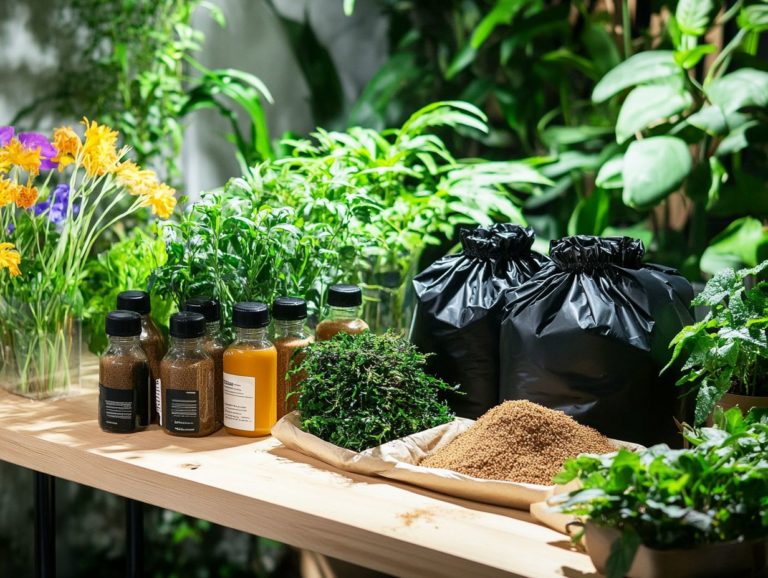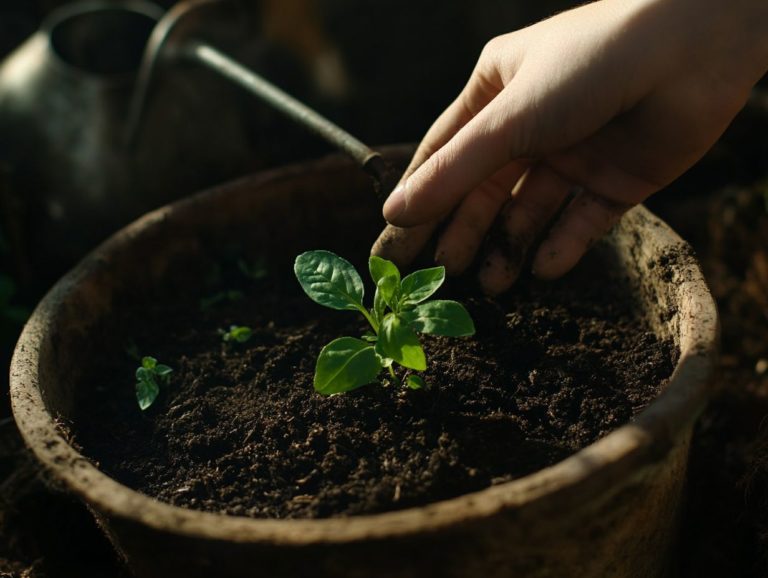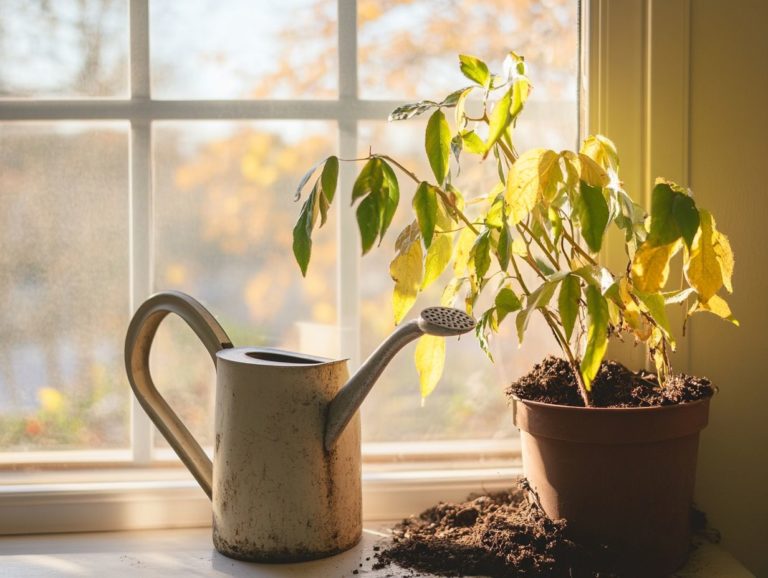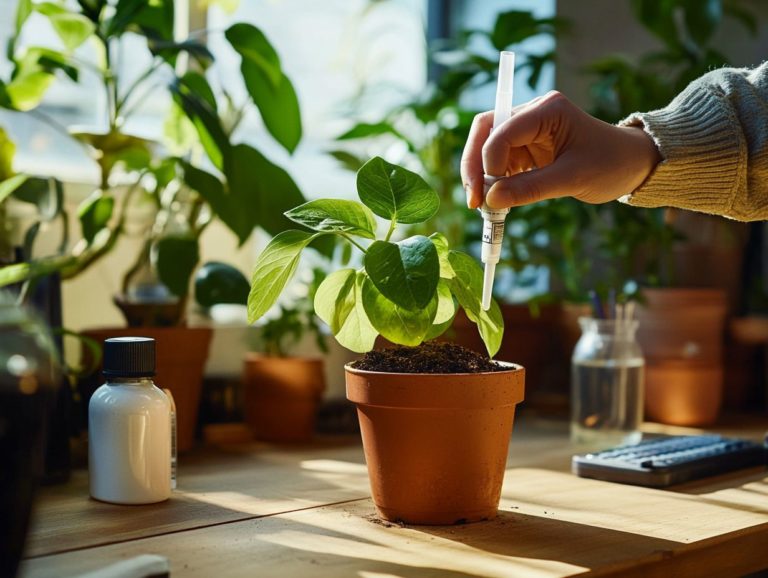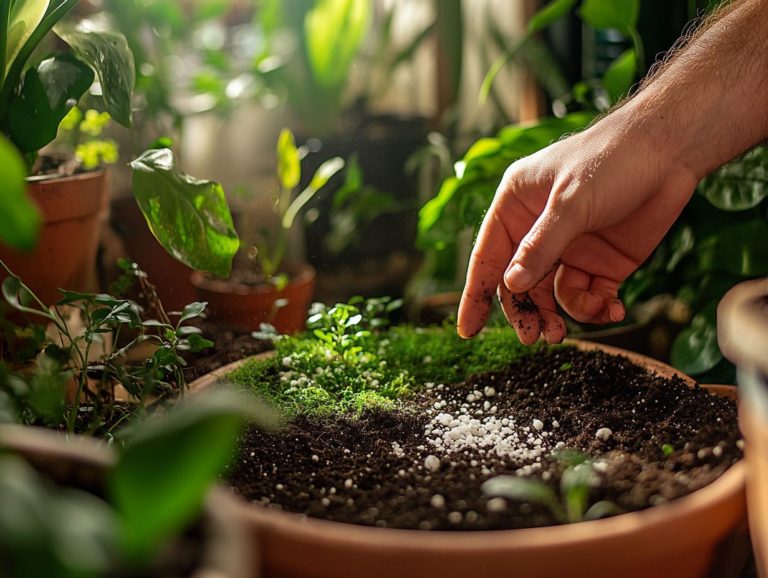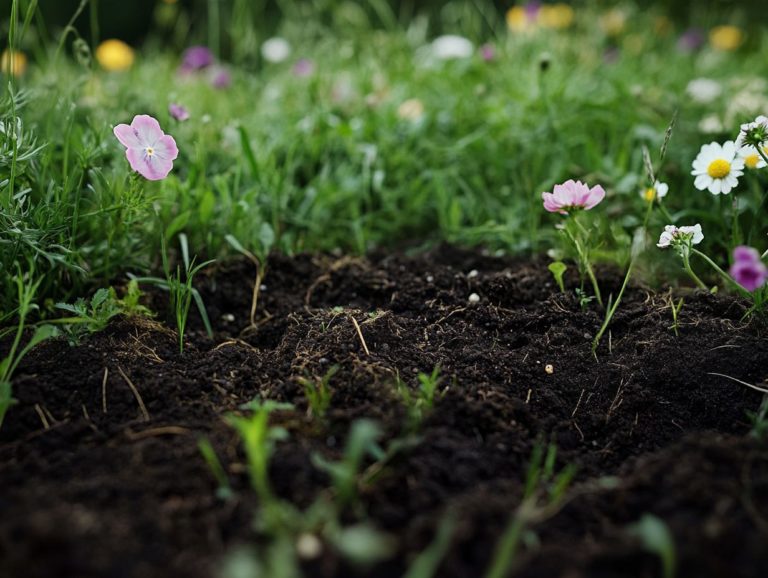How to Control Soil pH for Indoor Plants
Maintaining the ideal soil pH is essential for ensuring the health and vitality of your indoor plants.
Even minor fluctuations in acidity or alkalinity can greatly affect plant growth, nutrient availability, and their overall well-being.
This article delves into the effects of soil pH on your greenery. It outlines various testing methods and provides you with valuable tips for adjusting and sustaining optimal pH levels.
It also highlights common pitfalls to avoid. This will set you on the path to flourishing indoor plants.
Contents
- Key Takeaways:
- The Importance of Soil pH for Indoor Plants
- How to Test Soil pH
- Adjusting Soil pH
- Maintaining Optimal Soil pH
- Common Mistakes to Avoid
- Frequently Asked Questions
- Can I use household items to control soil pH for my indoor plants?
- How often should I test the soil pH for my indoor plants?
- Is it necessary to adjust the soil pH for all indoor plants?
- Can I use commercial products to control soil pH for my indoor plants?
- How does soil pH affect plant growth?
- What is the ideal soil pH for indoor plants?
Key Takeaways:

- Proper soil pH is crucial for healthy indoor plants as it affects their growth and nutrient absorption.
- Soil pH can be tested using simple methods like pH test strips or DIY soil tests.
- Adjusting soil pH can be done through adding amendments, but it is important to consider the specific needs of different plants.
- Maintaining optimal soil pH requires regular testing and adjustments to ensure the best conditions for plant growth.
- Avoiding common mistakes like using tap water or incorrect amendments can prevent negative effects on plant health due to incorrect soil pH.
The Importance of Soil pH for Indoor Plants
Understanding soil pH is crucial for the health of your indoor plants.
It directly affects nutrient availability, moisture retention, and the risk of root rot.
For your potted plants, keeping the soil pH at an optimal level is key. It determines how effective various amendments and natural ingredients will be in enhancing growth.
When you maintain an ideal pH range, you ensure that essential nutrients are readily accessible to your plants. This creates the perfect environment for a flourishing indoor garden.
Effects of Soil pH on Plant Growth
Soil pH is essential for your plants growth.
It directly impacts nutrient levels, which in turn affects their overall health and vitality.
The availability of key nutrients like nitrogen, phosphorus, and potassium fluctuates significantly with changes in pH levels.
When the pH strays too low or too high, these vital nutrients can become locked away. This makes them inaccessible to the plant s root system.
This may lead to nutrient deficiencies, showing up as stunted growth, yellowing leaves, and lackluster fruit development.
Conversely, if the conditions are too acidic or alkaline, toxicities can arise.
This causes elements like iron and manganese to build up to harmful levels, potentially poisoning your plants.
A drastic pH imbalance can create an unfriendly environment.
This heightens the risk of root rot, which jeopardizes the plant s ability to effectively absorb water and nutrients.
How to Test Soil pH
Testing soil pH is an essential part of grasping the health of your potted plants.
You can achieve this through a variety of methods, including the use of commercial soil testing kits, such as the Luster Leaf Rapitest.
Methods for Measuring Soil pH
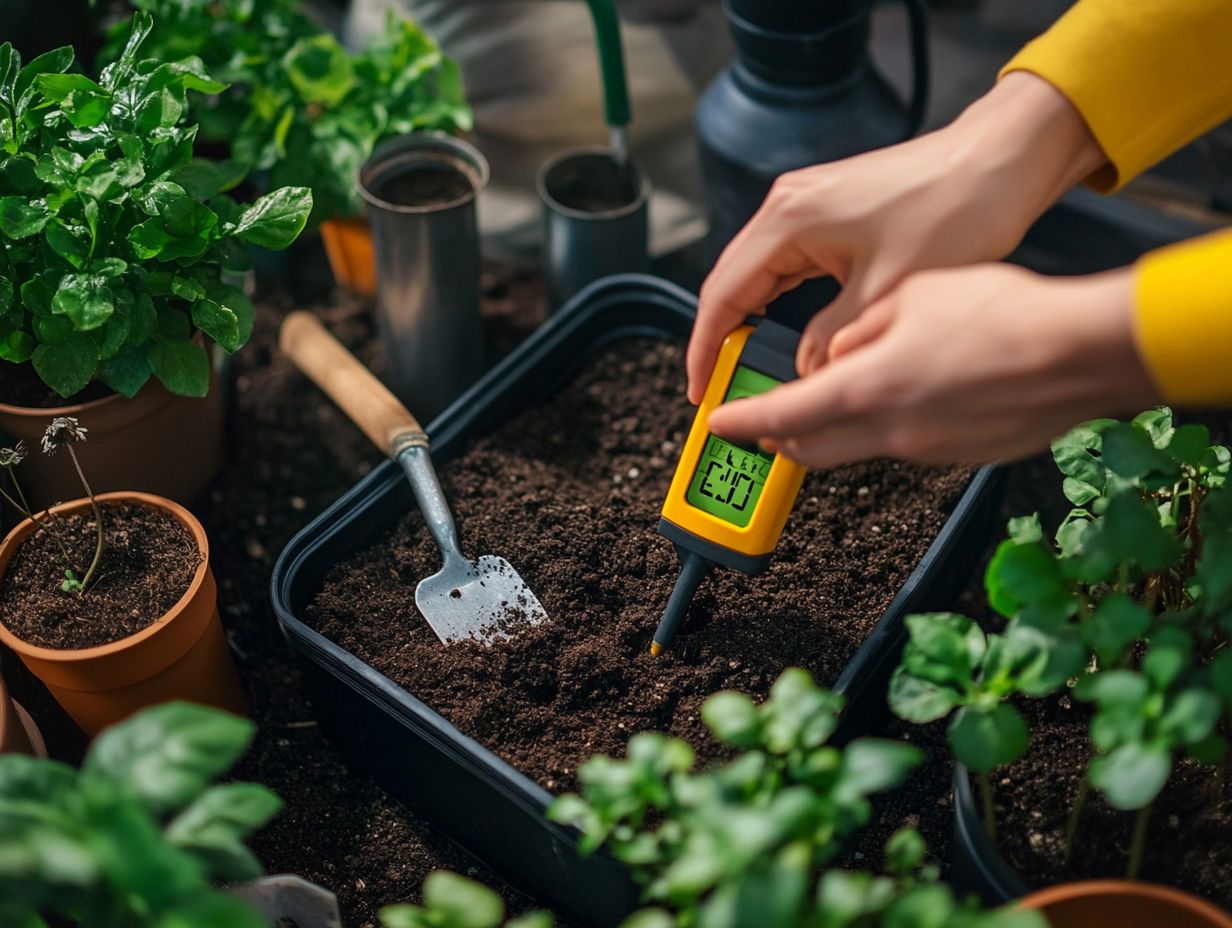
You have a variety of methods at your disposal for measuring soil pH.
User-friendly soil testing kits like the Luster Leaf Rapitest deliver quick and reliable results.
If precision is your aim, consider using pH meters for a more detailed assessment.
Test strips offer a convenient way to get a snapshot of your soil’s condition.
For those who prefer a more natural approach, home remedies using ingredients like vinegar and baking soda can provide basic indicators of soil acidity or alkalinity.
Getting accurate measurements is crucial!
The right info directly impacts the amendments you choose.
For example, if your test reveals acidic soil, you might turn to options like elemental sulfur or aluminum sulfate to adjust the pH levels.
By taking these informed steps, including adjusting the potting soil mixture, you ensure that your plants receive the optimal nutrients they need.
This promotes healthy growth and bountiful yields.
Adjusting Soil pH
Adjusting soil pH is vital for cultivating the perfect environment for your indoor plants. You can achieve this through various methods, such as incorporating acidifying materials like compost, ground eggshells, and coffee grounds. These will help lower the soil pH.
This thoughtful approach empowers your plants to thrive in their indoor sanctuary using acidifying mulch such as pine needles and wood chips.
Using Amendments to Change Soil pH
Using amendments is one of the most effective strategies to adjust soil pH, especially when you aim to lower it for plants that prefer acidic soil like rhododendrons and azaleas.
Many gardeners opt for elemental sulfur (a natural mineral used to lower soil pH), applying it at a rate of 0.5 to 1 pound per 100 square feet. This method effectively lowers pH gradually over time.
Incorporating organic materials like pine needles or wood chips as mulch can naturally acidify the surrounding soil. This provides a welcome boost for plants thriving in lower pH environments.
A layer of pine bark mulch enhances acidity and improves moisture retention. This creates a nurturing environment for your acid-loving plants. Well-decomposed leaf mold enriches the soil while contributing to pH modification, making it a multifunctional choice for your garden.
Factors to Consider for Different Types of Plants
When you adjust soil pH, you must consider the unique needs of various plant types. This is particularly important for plants like rhododendrons, azaleas, and hydrangeas that flourish in acidic conditions.
Understanding the ideal pH range for these beauties, typically between 5.0 and 6.5, can significantly boost their growth and flowering potential. For optimal results, consider using top soil amendments for healthy indoor plants. In contrast, many vegetables like tomatoes thrive in a more neutral to slightly acidic environment, ideally ranging from 6.0 to 7.0.
Soil pH directly influences nutrient availability. Certain micronutrients become more accessible at lower pH levels, while others, like molybdenum, prefer the alkaline side. To amend your soil effectively, consider incorporating organic materials like peat moss or specific acidic fertilizers such as ammonium sulfate. This ensures they align with your plants pH preferences for optimal health.
Maintaining Optimal Soil pH
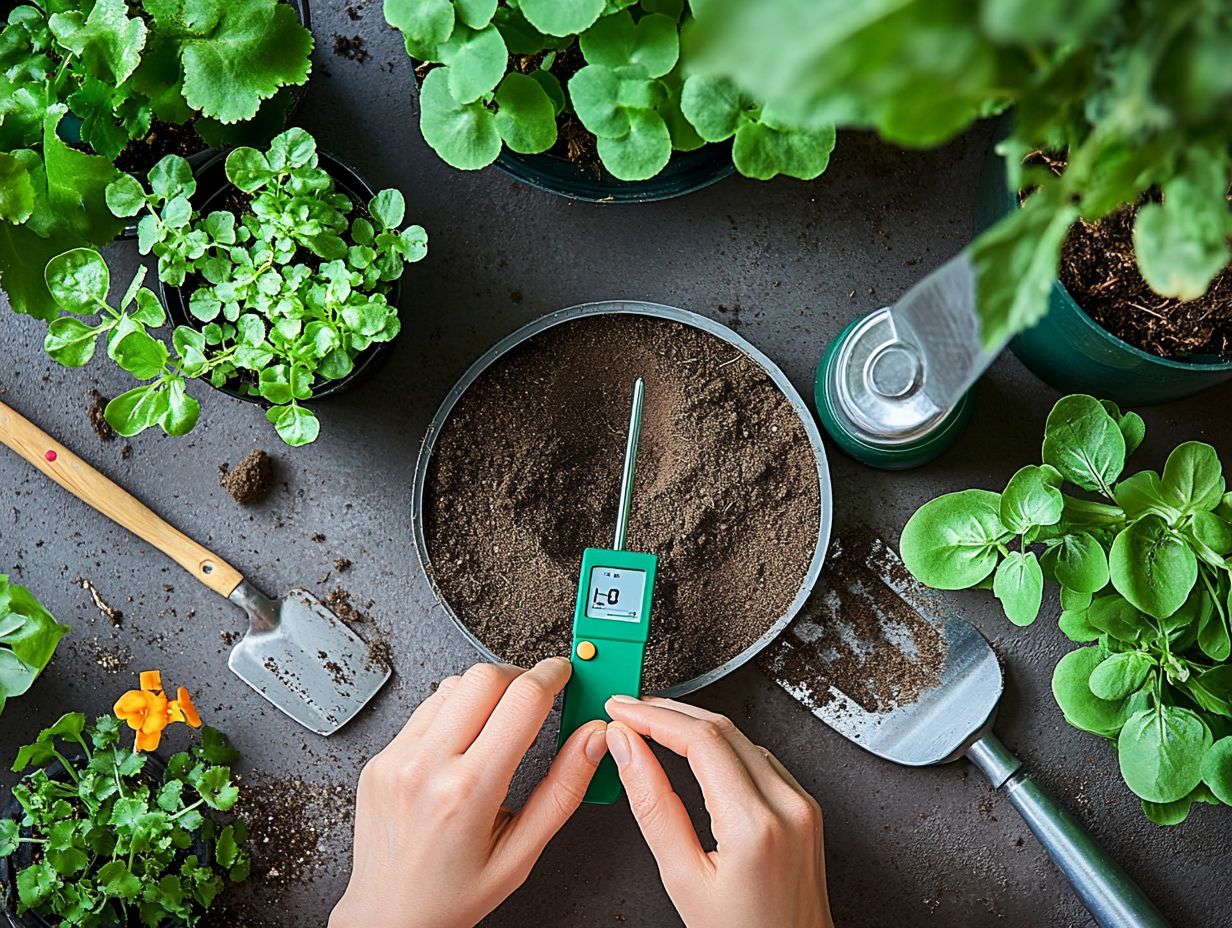
Maintaining optimal soil pH is an ongoing endeavor that requires your attention to detail. Regular testing and smart adjustments tailored to your indoor plants’ unique needs will ensure they receive the key nutrients necessary for robust growth.
By staying proactive in this process, you cultivate an environment where your plants can truly thrive.
Regular Testing and Adjustments
Keep your plants happy with regular checks and smart adjustments! Regularly testing and adjusting the soil pH is essential for maintaining nutrient levels and preventing issues like root rot in your indoor plants.
Establish a consistent schedule to monitor soil conditions effectively, ideally conducting pH tests every six months. Use a reliable kit or send samples to a local extension service for precise analysis. Once you have the results, look for a pH range that suits your plants, usually between 6.0 and 7.0 for most species. For more detailed insights, check out understanding soil pH for indoor plants.
If adjustments are necessary, you can raise pH levels by adding lime or lower them with sulfur. Implementing these changes thoughtfully will promote healthier growth and enhance the overall vitality of your indoor garden.
Common Mistakes to Avoid
Avoid common mistakes related to soil pH and use proper watering techniques to ensure your plants flourish in a vibrant and healthy environment.
An incorrect soil pH can lead to nutrient imbalances and even cause root rot, jeopardizing your garden’s success.
Effects of Incorrect Soil pH on Plants
An incorrect soil pH can significantly disrupt your plants’ growth. This leads to nutrient imbalances that may result in poor health or even root rot.
When soil pH is far from the optimal range, essential nutrients become less accessible. You might see signs like stunted growth, yellowing leaves, or blossom drop.
An overly acidic environment can block the uptake of calcium and magnesium. In contrast, alkaline soils may hinder the absorption of important nutrients like iron and manganese.
Watch for these symptoms and monitor nutrient levels regularly. Addressing imbalances early helps you nurture a flourishing garden full of vitality.
Frequently Asked Questions
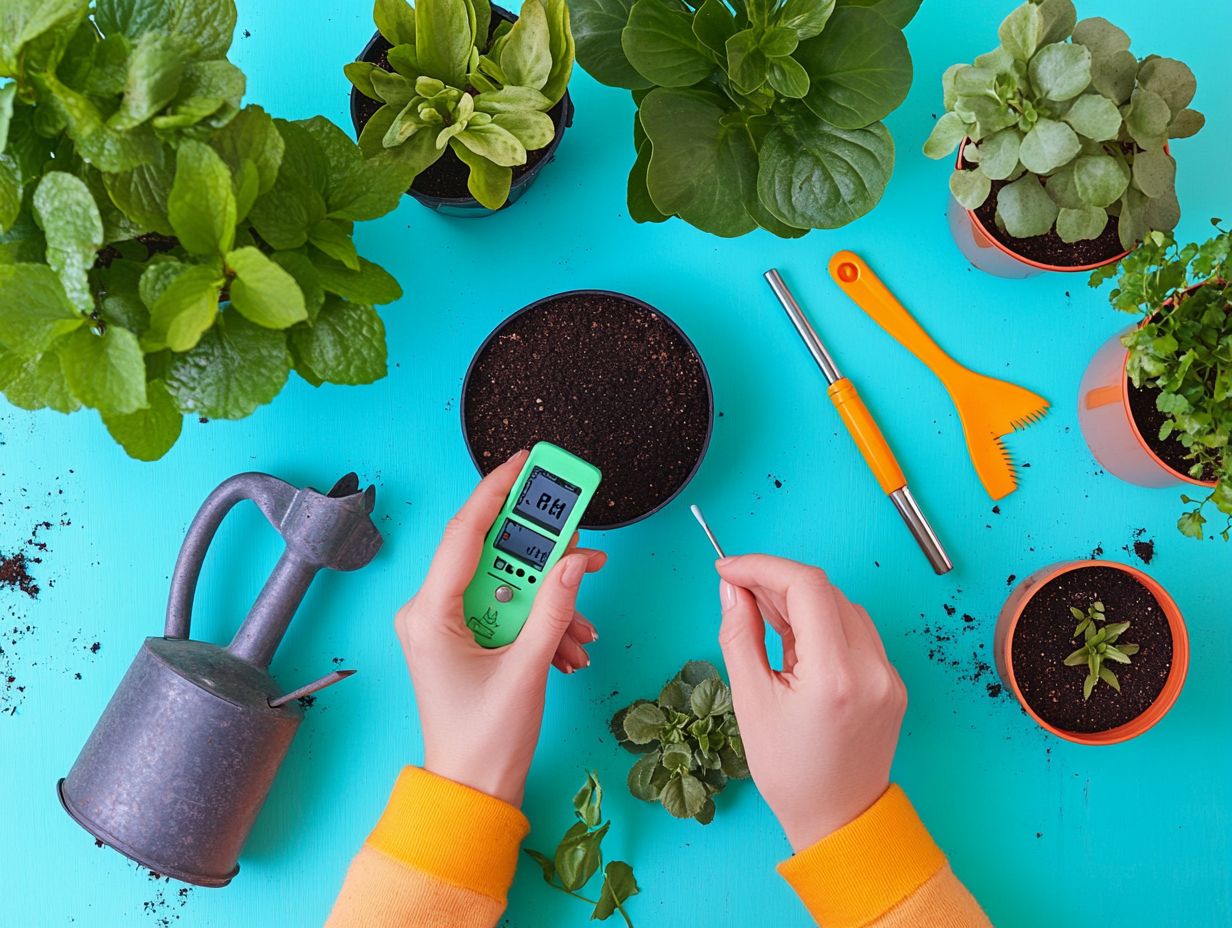
-
Can I use household items to control soil pH for my indoor plants?
Yes! Items like vinegar, baking soda, or coffee grounds can adjust soil pH. First, test your soil to know its current pH level.
-
How often should I test the soil pH for my indoor plants?
Test every 2-3 months. If you notice changes in growth or health, it’s especially important.
-
Is it necessary to adjust the soil pH for all indoor plants?
No, not all plants need a specific pH. Some can thrive in various pH ranges. Research your plants’ specific needs.
-
Can I use commercial products to control soil pH for my indoor plants?
Yes, various products like pH adjusters or soil amendments can help. Always follow the instructions carefully.
-
How does soil pH affect plant growth?
Soil pH significantly impacts plant growth by affecting nutrient availability. If pH is too high or low, nutrients may become unavailable, which stunts growth.
-
What is the ideal soil pH for indoor plants?
The ideal pH for most indoor plants is between 6.0-7.0. Some might have specific needs, so research before making adjustments.
Start checking your soil pH today to ensure your plants thrive!

